Testicular Cancer Caused by AFFF Firefighting Foam
The correlation between Aqueous Film Forming Foam (AFFF) and an increase in testicular cancer risk, particularly among those in firefighting professions, has garnered attention within scientific and legal communities. This connection primarily revolves around the presence of Per- and poly-fluoroalkyl substances (PFAS), notably PFOS, within AFFF, which has been linked to adverse health outcomes. As legal actions and settlements begin to unfold, alongside ongoing research into PFAS's health implications, the urgency to understand and mitigate these risks has never been more paramount. This evolving situation presents a complex challenge, intertwining public health concerns, occupational safety, and environmental impact, which merits a closer examination of the multifaceted repercussions of PFAS exposure.
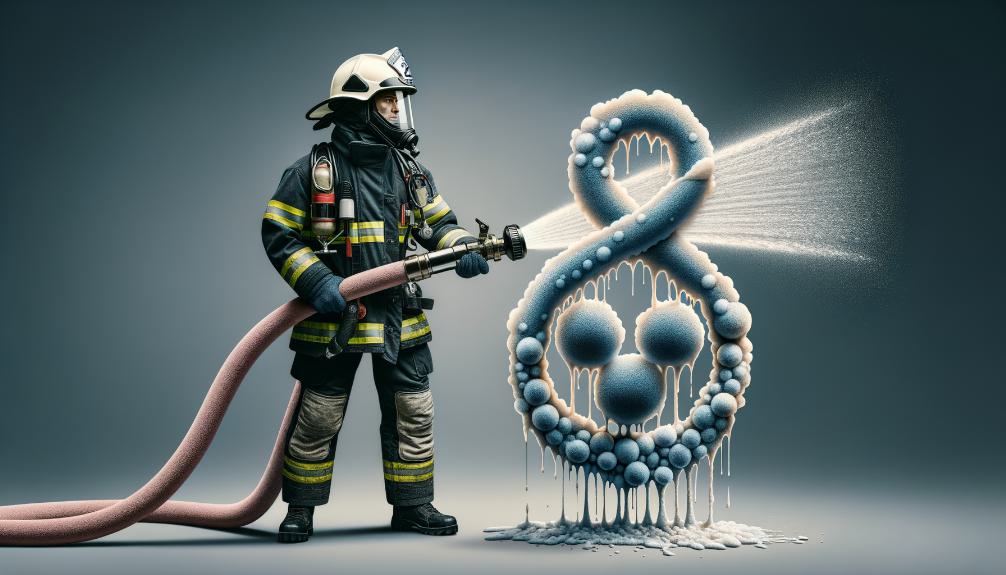
Key Takeaways
- PFAS in AFFF firefighting foam is directly linked to an increased risk of testicular cancer.
- Firefighters and military personnel face heightened exposure to PFAS, elevating their risk.
- Elevated serum PFAS levels are found in men diagnosed with testicular cancer.
- Protective measures and awareness are critical for at-risk occupations to mitigate exposure risks.
Understanding AFFF

Aqueous Film-Forming Foam (AFFF) represents a critical firefighting tool, specifically engineered to suppress flammable liquid fires through its unique blend of chemicals, including the controversial PFAS substances, PFOS, and PFOA. This firefighting foam has been pivotal for military personnel and firefighters, providing an effective means to combat potentially catastrophic fires involving fuels and other flammable liquids. However, the inclusion of PFAS chemicals in AFFF has raised many health and environmental concerns.
The presence of PFOS and PFOA, both part of the broader group of PFAS chemicals, in AFFF, has been linked to a range of health issues. Among these, testicular cancer stands out as a particularly alarming risk for those exposed to these chemicals. Military personnel and firefighters, who frequently come into contact with AFFF, are at a heightened risk of developing health complications due to their occupational exposure. The persistence and bioaccumulation tendencies of PFAS chemicals exacerbate these risks, leading to long-term health impacts.
Furthermore, the use of AFFF on military bases and at firefighting sites has led to widespread environmental contamination. The chemicals in AFFF can leach into the soil and water systems, posing a risk not just to those directly exposed through their work but also to communities surrounding these areas. The contamination issue underscores the broader, insidious impact of PFAS chemicals in AFFF, beyond the immediate firefighting context. This complex interplay of utility and harm highlights the need for a nuanced understanding of AFFF and its implications for both human health and environmental safety.
AFFF and PFAS Explained
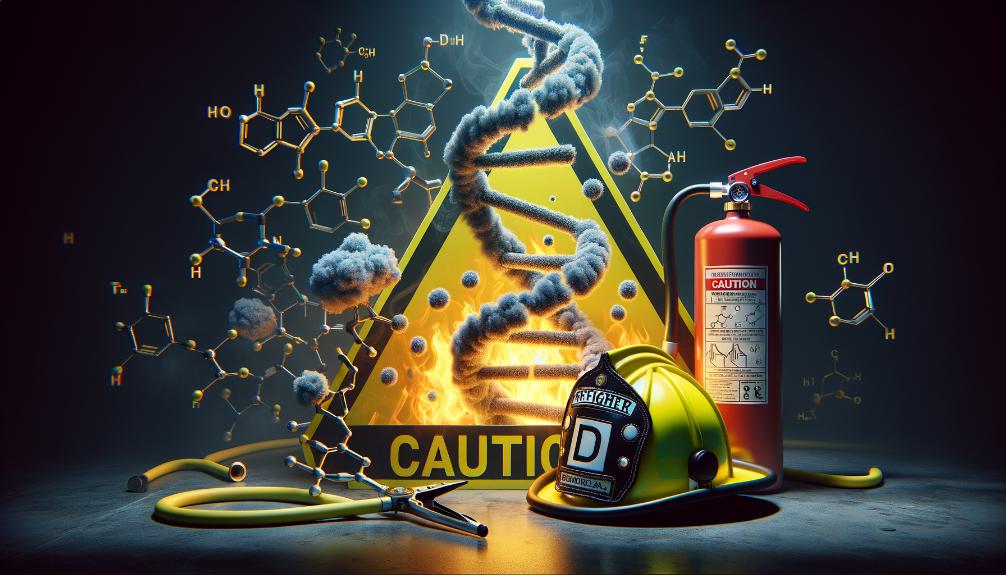
Exploring the composition of Aqueous Film-Forming Foam (AFFF) reveals its reliance on per- and polyfluoroalkyl substances (PFAS), including the notorious PFOS and PFOA, which pose significant health and environmental risks. These synthetic chemicals are integral to AFFF's effectiveness in suppressing difficult fires, particularly those involving flammable liquids. However, the robust nature of PFAS chemicals, which do not break down in the environment, leads to their accumulation in the ecosystem and, consequently, in human bodies.
The persistence of PFAS chemicals in the environment means that once released, they can travel through soil and water, leading to widespread contamination. This contamination is especially consequential on military bases and in communities where AFFF has been extensively used for firefighting and training exercises. The exposure to these toxic chemicals has been linked to an array of health risks, raising concerns among public health professionals and environmentalists alike.
Among the health risks associated with PFAS exposure from AFFF, testicular cancer emerges as a particularly alarming condition. While the discussion on the direct link between PFAS exposure and testicular cancer will be further elaborated in subsequent sections, it is crucial to acknowledge that the bioaccumulative nature of these chemicals poses a long-term risk to human health.
The issue of AFFF contamination underscores the need for stringent measures to manage and mitigate exposure to PFAS chemicals. With firefighting foam being an essential tool for emergency responders, finding safer alternatives that do not compromise on performance while eliminating health risks becomes imperative.
The Link to Testicular Cancer

Having established the environmental and health risks associated with PFAS in AFFF, it is critical to examine its specific connection to the increased incidence of testicular cancer among exposed populations. The pervasive use of AFFF firefighting foam, especially in military and firefighting contexts, has introduced considerable levels of PFAS chemicals like PFOA and PFOS into the environment. These substances, known for their persistence and bioaccumulation potential, have raised substantial health concerns, particularly regarding the reproductive system of exposed individuals.
Studies have identified a direct correlation between PFAS exposure and the development of testicular cancer, highlighting the elevated serum levels of these chemicals in men diagnosed with the disease. This association underscores the serious health risk that PFAS-containing AFFF foam poses, particularly to firefighters and military personnel who are frequently in contact with these substances. The reproductive system, particularly in young men, is notably susceptible to the adverse effects of PFAS, contributing to the heightened risk of developing testicular cancer.
The continuous application of AFFF foam for firefighting and training exercises on military bases has not only led to extensive environmental contamination but also to health implications for those regularly exposed to these chemicals. The link between AFFF firefighting foam and testicular cancer emphasizes the urgent need to address the presence of PFAS in these products and mitigate their impact on human health, especially concerning the reproductive health of those most at risk.
Insights From Recent Studies

Recent studies provide compelling evidence linking exposure to PFAS chemicals in AFFF firefighting foam to an elevated risk of testicular cancer. These findings underscore the critical risk factors associated with PFAS, notably PFOS and PFOA, among individuals, particularly in military and firefighting professions. This section will present an overview of these study findings and the identified risk factors, emphasizing the need for informed responses and preventive measures.
Study Findings Overview
Numerous studies have consistently demonstrated a direct link between exposure to PFAS from AFFF firefighting foam and an increased risk of testicular cancer. Men diagnosed with this form of cancer have notably higher serum PFAS levels, especially of PFOS, indicating a robust association with testicular cancer. This direct association underscores the health implications of PFAS exposure, specifically from AFFF foam usage. The research, featured in authoritative sources such as Environmental Health Perspectives, has spotlighted the alarming relationship between these chemicals and cancer risk. The findings are crucial in understanding the risks firefighters and individuals exposed to these foams face, highlighting the need for stringent safety measures and regulations to mitigate exposure.
Risk Factors Identified
Insights from recent studies have pinpointed exposure to PFAS in AFFF firefighting foam as a critical risk factor for developing testicular cancer. These findings underscore the dangerous link between serum PFAS levels, particularly PFOS, and the incidence of testicular cancer among exposed individuals. Men with testicular cancer have been identified to possess particularly higher concentrations of these toxic chemicals in their blood, highlighting the perilous nature of PFAS exposure through AFFF foam. Scientific research further solidifies the connection, implicating the presence of PFAS components like PFOA in elevating the risk among those with documented exposure. This evidence categorically positions exposure to PFAS in AFFF firefighting foam among the paramount risk factors for men developing testicular cancer.
Occupational Exposure Risks
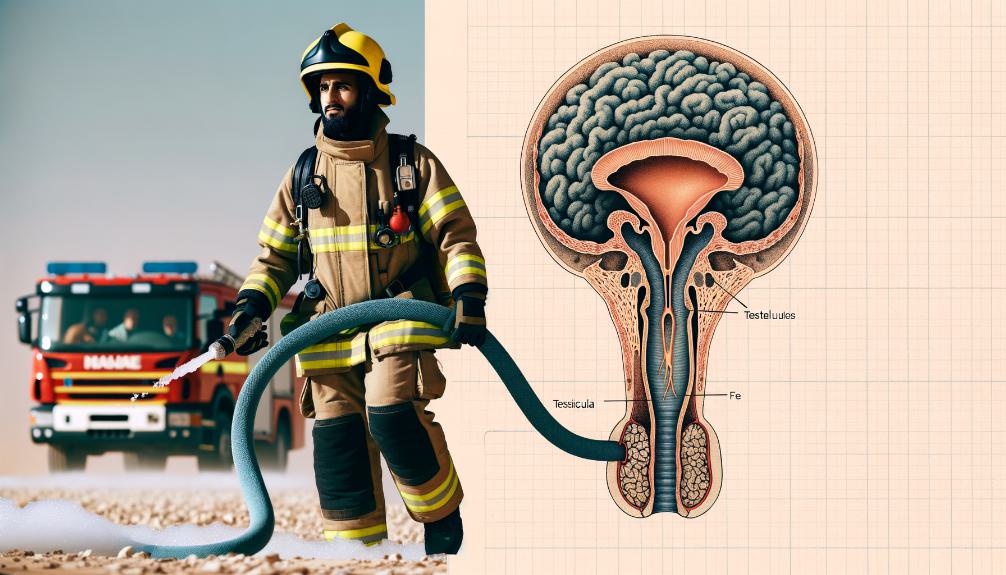
The subtopic of 'Occupational Exposure Risks' examines the heightened vulnerability of certain professions, including firefighters, foam manufacturers, and military personnel, to AFFF firefighting foam. This section will explore the pathways through which these individuals encounter PFAS and the subsequent health implications, notably testicular cancer. Additionally, it will offer guidance on protective measures to mitigate these risks, underscoring the importance of informed and proactive approaches to safety in these high-risk occupations.
High-Risk Occupations
Certain occupations, including firefighters, foam manufacturers, and Air Force personnel, find themselves at heightened risk of exposure to AFFF firefighting foam, which is linked to considerable health risks such as testicular cancer. The presence of Per- and poly-fluoroalkyl substances (PFAS) in AFFF foam, particularly PFOS, and PFOA, poses a substantial threat to those frequently in contact with these chemicals. Due to their occupational exposure, these individuals may experience elevated serum levels of PFAS, correlating with an increased likelihood of developing health issues. The nature of their work, especially in scenarios requiring the use of AFFF for extinguishing fires, places them squarely at risk, underscoring the need for stringent protective measures and ongoing health monitoring to mitigate these health risks effectively.
AFFF Exposure Pathways
Occupational exposure to AFFF firefighting foam, particularly among foam manufacturers, firefighters, and military personnel, introduces health risks due to the presence of toxic PFAS chemicals like PFOS and PFOA. These AFFF exposure pathways include direct contact with the foam during manufacturing, firefighting operations, and maintenance or training exercises on military bases. Firefighters, due to their frequent engagement in extinguishing fires with AFFF, are at a heightened risk, with PFAS compounds like PFOS and PFOA potentially accumulating in their blood over time. Similarly, military personnel stationed at bases where AFFF is extensively used face substantial health hazards, as ongoing exposure to these toxic substances can severely impact their well-being, increasing the risk of developing conditions such as testicular cancer.
Protective Measures Guidance
Employers must implement comprehensive training programs on the safe handling of AFFF firefighting foam to mitigate occupational exposure risks effectively. This training should cover the use of personal protective equipment (PPE) such as gloves and masks, which are essential in minimizing direct contact with AFFF substances. Additionally, the introduction of engineering controls, including effective ventilation systems, plays a critical role in reducing exposure to harmful AFFF fumes in firefighting environments. Regular air quality monitoring for AFFF-related contaminants is also vital to ensure the safety and health of personnel. Moreover, establishing strict decontamination protocols for firefighters and other personnel exposed to AFFF is crucial in preventing secondary contamination risks. Together, these measures form a comprehensive approach to safeguarding workers from the potential health hazards associated with AFFF firefighting foam.
Military Personnel and PFAS

The exposure of military personnel to PFAS, particularly through their roles as firefighters, poses a considerable health risk, highlighted by studies such as the one using blood samples from the DoD Serum Repository. This study specifically targeted Air Force servicemen who, due to their occupational activities, have been in direct contact with AFFF firefighting foam. This foam, known for its effectiveness in extinguishing fuel fires, contains high levels of PFAS, a group of chemicals linked to various health issues, including testicular cancer.
Analysis of blood samples from Airmen firefighters, facilitated by the DoD Serum Repository, revealed elevated PFAS levels among this group. Notably, those diagnosed with testicular cancer exhibited higher PFOS levels than their counterparts without cancer. These findings underscore the heightened vulnerability of military personnel to PFAS exposure due to their professional duties.
The Department of Defense has identified 707 defense sites contaminated with PFAS, emphasizing the widespread nature of this issue. This contamination not only affects those directly handling AFFF firefighting foam but also potentially impacts the broader military community through environmental exposure. The presence of PFAS at such a high number of military installations indicates a systemic risk to service members, necessitating urgent and comprehensive measures to mitigate exposure and safeguard the health of military personnel.
In light of these findings, the relationship between PFAS exposure and the incidence of testicular cancer among Air Force servicemen underscores the critical need for ongoing research, improved safety protocols, and effective health monitoring for those in the military, particularly firefighters who are disproportionately affected by PFAS due to their occupational exposure.
Health Impacts of PFAS
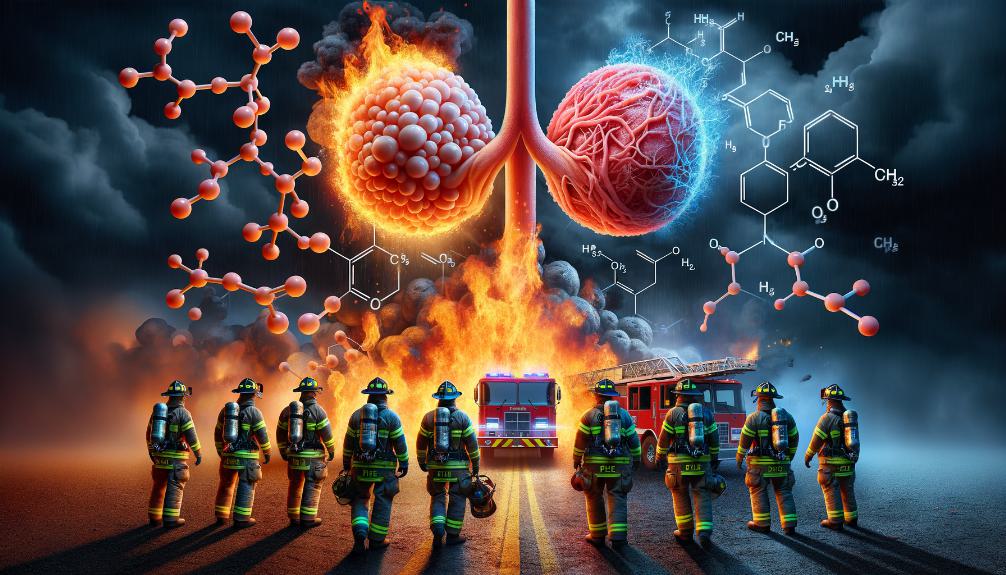
Given their persistence in the environment and the human body, PFAS exposure has been scientifically linked to a range of adverse health outcomes, including kidney cancer, liver damage, and high cholesterol. These chemicals, which do not break down and accumulate in the human body, pose public health concerns due to their widespread use and durability. Nearly all Americans have detectable levels of PFAS in their blood, underscoring the ubiquity and persistence of these substances.
A critical study has drawn a direct association between PFOS, a type of PFAS, present in the blood, and the occurrence of testicular cancer. This finding highlights the serious health impacts of PFAS exposure, particularly concerning cancer risk. Given the durability of PFAS and their ability to accumulate in the human body over time, the long-term health risks associated with these chemicals are increasingly coming into focus. Beyond cancer, the health impacts of PFAS exposure extend to high cholesterol levels and liver damage, further amplifying the public health implications.
The study's revelations about the link between PFAS exposure and testicular cancer, in particular, have raised alarms about the safety of substances that have become commonplace in various industries, including firefighting. As more research sheds light on the health hazards posed by PFAS, the urgency to address these concerns and mitigate exposure becomes paramount. The findings underscore the need for continued investigation into the health effects of PFAS, to inform public health policies and protect individuals from the potentially life-threatening consequences of exposure to these chemicals.
Personal Stories of Affected Firefighters

The stories of firefighters who have faced testicular cancer following exposure to AFFF firefighting foam are both compelling and distressing. These narratives not only shed light on the initial symptoms and the often arduous journey toward diagnosis but also reveal how affected individuals and their support networks cope with the disease. Exploring these personal accounts provides a deeper understanding of the human impact behind the statistics, emphasizing the urgent need to address the health risks associated with AFFF exposure.
Firefighters’ Initial Symptoms
Several firefighters exposed to AFFF firefighting foam have recounted experiencing initial symptoms such as testicular swelling, discomfort, or notable changes in size before a diagnosis of testicular cancer was confirmed. These early warning signs also included the development of testicular lumps and abnormalities in their reproductive organs, raising alarm over the potential health risks associated with AFFF exposure. The link between AFFF firefighting foam and testicular cancer has become a significant concern within the firefighting community. The personal stories of those affected underscore the importance of vigilance and early detection among firefighters who have been exposed to these harmful chemicals. This correlation highlights the need for ongoing monitoring and intervention to protect the health and well-being of firefighters at risk.
Diagnosis Journey
As firefighters grapple with symptoms indicative of potential exposure to AFFF firefighting foam, their journey toward a diagnosis of testicular cancer often unfolds through a series of comprehensive medical evaluations. The latency period of about 15 years complicates early detection, with symptoms such as swelling, lumps, and changes in the testicles being initial red flags. Utilizing diagnostic tools like ultrasounds, blood tests, and biopsies, healthcare professionals can confirm the presence of cancer. Treatment options vary, including surgery, chemotherapy, and radiation, tailored to individual needs. Concurrently, many affected firefighters pursue legal actions against AFFF manufacturers to seek compensation for medical expenses, underlining the critical intersection of health concerns and legal recourse in their battle against testicular cancer.
Coping and Support
How do firefighters affected by AFFF-related testicular cancer find solace and support in their journey toward recovery? Many turn to cancer survivor support groups, where they connect with others facing similar battles. Personal stories shared within these communities not only foster a sense of solidarity but also elevate awareness about the risks associated with AFFF exposure. By exchanging experiences and coping strategies, firefighters gain empowerment and invaluable insights into navigating their diagnosis. Such support networks are instrumental in offering guidance, and reinforcing the importance of solidarity among firefighters. Together, they navigate the challenges of AFFF-related testicular cancer, drawing strength from shared experiences and the collective determination to overcome the adversities posed by their profession and exposure.
Legal Battles and Compensation

In the wake of mounting lawsuits, victims of testicular cancer linked to AFFF exposure are pursuing compensation for their medical expenses, spotlighting the legal responsibility of manufacturers. Legal battles against the makers of Aqueous Film-Forming Foam (AFFF) have intensified, with allegations pointing to negligence in the use of harmful chemicals within the firefighting foam. These lawsuits have culminated in billion-dollar settlements, marking a meaningful acknowledgment of the health risks posed by AFFF exposure and the accountability of companies involved in its production and distribution.
Victims, who have been diagnosed with testicular cancer as a result of exposure to AFFF, are seeking compensation to cover extensive medical treatments and the impact on their quality of life. The financial settlements are seen not only as a means of addressing the personal losses suffered but also as a deterrent against future negligence. Many affected individuals have opted to join class-action suits, leveraging collective legal action to strengthen their case against well-resourced manufacturers.
Raising awareness about the potential dangers of AFFF exposure has become a crucial element of ongoing legal battles. Advocates argue that increased public understanding of the risks associated with AFFF can drive more stringent regulations and safety measures, potentially preventing further cases of testicular cancer and other related illnesses. As the fight for justice continues, the legal landscape surrounding AFFF exposure and testicular cancer is evolving, with each settlement and court decision setting precedents for future cases.
Screening and Prevention Tips
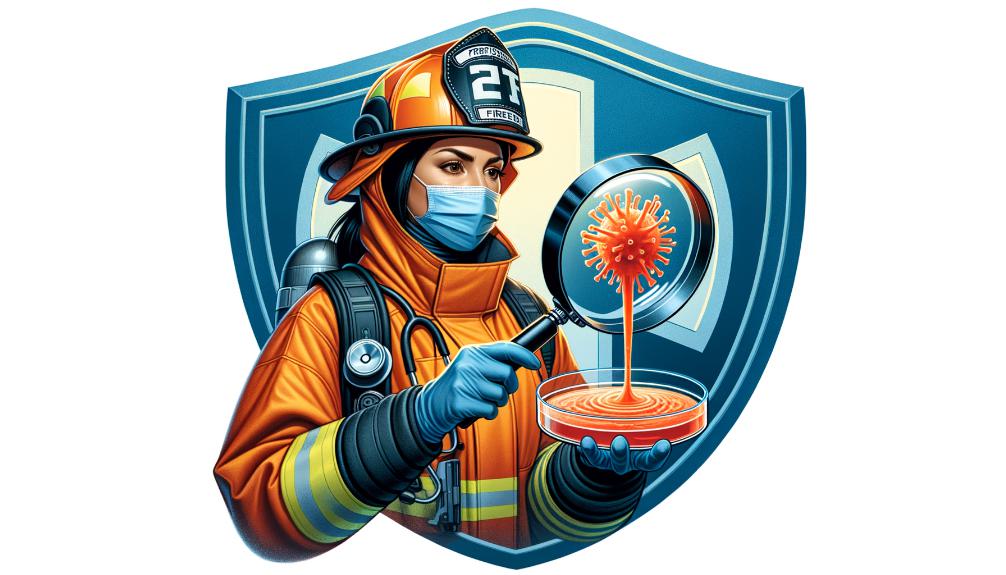
Regular testicular self-examinations are a crucial first step in the early detection of potential abnormalities, greatly enhancing the chances of successful treatment. This simple yet effective screening method allows individuals to become familiar with their normal baseline, making it easier to notice any changes or irregularities that may indicate the onset of testicular cancer. Given the association between AFFF firefighting foam and the increased risk of developing testicular cancer, self-exams become even more paramount for those who have been exposed to these chemicals.
Moreover, men with a family history of testicular cancer should strongly consider genetic counseling and more formal screening processes. Genetic counseling can provide valuable insights into personal risk factors and guide individuals toward appropriate screening strategies, further bolstering early detection efforts. Routine medical check-ups, ideally incorporating testicular exams, play a vital role in monitoring health and identifying signs of cancer early on. These check-ups serve as an additional layer of prevention, especially for individuals at higher risk.
Prevention strategies extend beyond direct screening methods. Limiting exposure to AFFF firefighting foam, when possible, is a critical preventive measure to reduce the risk of developing AFFF-related testicular cancer. Adopting a healthy lifestyle, characterized by regular exercise and a balanced diet, contributes to overall well-being and may lower the risk of various cancers. Together, these screening and prevention tips offer a comprehensive approach to reducing the incidence of testicular cancer, particularly for those exposed to AFFF firefighting foam.
Alternatives to AFFF

Given the health and environmental concerns associated with AFFF firefighting foam, fluorine-free foams emerge as safer alternatives, heralding a new era in firefighting technology. These AFFF alternatives, including AR-AFFF and Class A foams, represent considerable advancements in efforts to mitigate the adverse effects of traditional firefighting agents on both human health and the natural environment.
AR-AFFF, a variant designed to be less harmful, and Class A foams, recognized for their non-toxic properties, offer viable solutions for firefighting operations seeking to minimize health risks. The shift towards these alternatives is driven by the urgent need to address the serious health concerns associated with conventional AFFF foams, such as the heightened risk of testicular cancer among firefighters exposed to these substances.
The development of these environmentally friendly foam solutions is a testament to the innovations in firefighting technology aimed at providing effective firefighting capabilities without compromising safety. By transitioning to these safer alternatives, firefighting services can reduce the impact of their operations on both human health and ecosystems, aligning their practices with contemporary environmental and health standards.
The move towards non-toxic foam options underscores a broader commitment within the firefighting community to embrace practices that safeguard the well-being of firefighters and the public alike. As awareness of the health risks associated with traditional AFFF foams grows, the adoption of these safer, environmentally friendly alternatives is set to become a cornerstone of modern firefighting strategy, ensuring that the crucial task of fire suppression is conducted in a manner that is both effective and responsible.
Supporting Affected Individuals

Acknowledging the shift towards safer firefighting alternatives underscores the importance of also focusing on the support and resources required for individuals affected by testicular cancer due to AFFF exposure. Those diagnosed with cancer linked to AFFF exposure may encounter a range of symptoms, including swelling, lumps, pain, or changes in the size or shape of the testicles. Addressing these symptoms promptly through medical diagnosis is critical. The diagnosis process involves comprehensive steps such as physical exams, ultrasounds, blood tests, biopsies, and imaging scans to confirm the presence and extent of cancer.
Treatment options for individuals with testicular cancer from AFFF exposure are varied and can include surgery, notably orchiectomy, alongside chemotherapy, radiation therapy, surveillance, or targeted therapy, depending on the case's specifics. Affected individuals need to be aware of these treatment possibilities and engage in discussions with healthcare professionals to determine the most suitable approach.
Moreover, legal actions play a pivotal role in supporting affected individuals. Pursuing litigation against AFFF manufacturers allows those impacted to seek compensation for medical expenses and other damages, while also holding companies accountable for their negligence. This legal route not only offers a means for financial relief but also contributes to broader awareness regarding the dangers of AFFF exposure.
Raising awareness is indeed crucial. It not only educates the public about the risks associated with AFFF but also ensures that those affected receive the necessary support, whether through medical care, legal advice, or compensation. Supporting affected individuals thus involves a holistic approach, encompassing medical treatment, legal recourse, and continuous efforts in awareness and education.
Frequently Asked Questions
Why Do Firefighters Get Testicular Cancer?
Firefighters may develop testicular cancer due to occupational hazards, including exposure to carcinogenic chemicals. Among these risks, the use of Aqueous Film Forming Foam (AFFF) in firefighting operations has become a concern. AFFF contains Per- and Polyfluoroalkyl Substances (PFAS), such as PFOA and PFOS, which have been linked to an elevated risk of testicular cancer. The correlation between prolonged exposure to these chemicals and the incidence of testicular cancer warrants further investigation.
What Cancers Are Associated With AFFF Foam?
Aqueous Film Forming Foam (AFFF), used primarily for firefighting, has been linked to various cancers due to its content of per- and polyfluoroalkyl substances (PFAS). Research indicates a significant association between exposure to AFFF foam and an elevated risk of several types of cancer, including kidney, pancreatic, prostate, and liver cancers, in addition to testicular cancer. These findings underscore the critical need for protective measures for individuals exposed to AFFF, particularly firefighters.
Are PFAS Linked to Testicular Cancer?
Recent studies have established a correlation between exposure to per- and polyfluoroalkyl substances (PFAS) and an increased risk of testicular cancer. These substances, notably PFOS and PFOA, have been identified to persist in the human body, potentially elevating the risk of developing testicular germ cell tumors. Research published in Environmental Health Perspectives has highlighted the first direct association between PFAS levels in the blood and the risk of testicular cancer.
What Chemicals Are Associated With Testicular Cancer?
Testicular cancer has been associated with various chemicals, among which perfluorooctane sulfonate (PFOS) and perfluorooctanoic acid (PFOA) are notable. These substances are persistent in the environment and can bioaccumulate in human tissues, leading to potential health risks. Research indicates a direct link between elevated levels of PFOS and PFOA in the bloodstream and an increased risk of developing testicular cancer, highlighting the importance of understanding and managing exposure to these chemicals.
Conclusion
In conclusion, the association between Aqueous Film Forming Foam (AFFF) usage and the elevated risk of testicular cancer underscores the critical need for continued research, enhanced regulatory measures, and the development of safer alternatives. The evidence linking PFAS exposure, particularly PFOS, to testicular cancer highlights the urgency in addressing occupational risks and implementing effective screening and prevention strategies. Legal actions and settlements serve as pivotal steps towards accountability and support for affected individuals, emphasizing the significance of comprehensive efforts to mitigate the health impacts of PFAS exposure.




